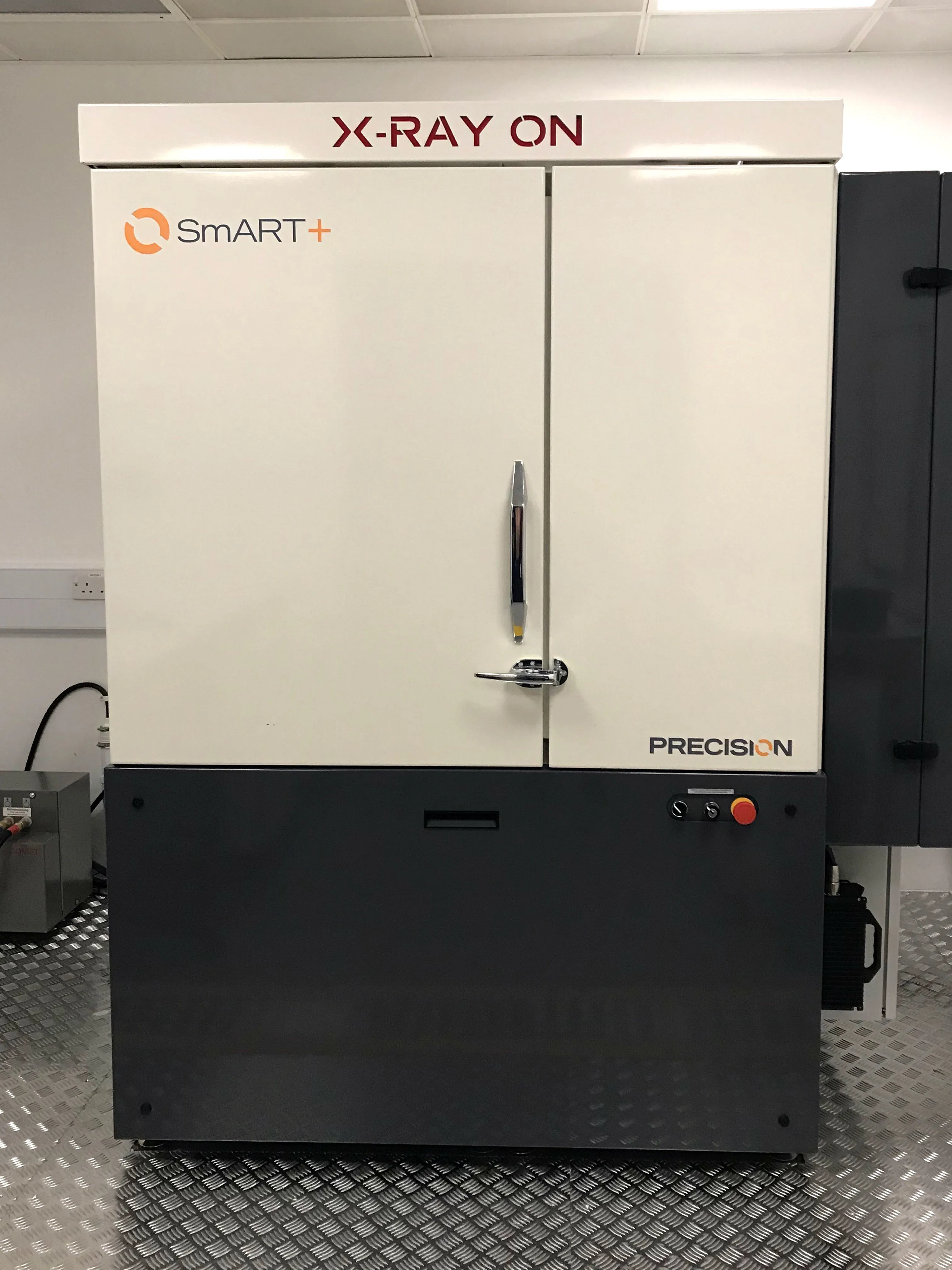Powered by our smART+ platform, King’s College scientists and researchers can apply the latest and most rigorous models to help guide and develop next generation therapies that so many families around the world hope for every day. And although we know that the road ahead remains challenging, we likewise know that dedicated teams, such as those led by Dr Samantha Terry, will never let up. And we will be right there with them.
Precision X-Ray, Inc
29 September 2021
Rare small animal irradiator part of School infrastructure
Small animal irradiator for commencement of pre-clinical radiotherapy projects

The School of Biomedical Engineering & Imaging Sciences has acquired a rare small animal irradiator, from Precision X-Ray Inc, as part of the revised radiation research strategy at Guy’s and St Thomas’ NHS Foundation Trust.
The initiative was prompted by Dr Samantha Terry, Senior Lecturer in Radiobiology, in collaboration with Dr Anthony Kong, Reader in Clinical Oncology, and Teresa Guerrero Urbano, Consultant Clinical Oncologist, in order to commence pre-clinical radiotherapy projects that allow for localised external beam radiation to tumours.
Dr Terry said mimicking what happens in the clinic when it comes to radiotherapy is important.
Currently, researchers have been mostly limited to using tumour models in mice and radiating the whole mouse homogenously, with an equal amount of radiation across the body.
“What we want to do is mimic the clinic and only radiate the areas of interest, which is usually the tumour,” Dr Terry said.
There are only two producers of the irradiator worldwide, and Precision X-Ray Inc has loaned one machine to King’s for two years.
A spokesperson for Precision X-Ray, Inc said the company is honored and delighted to partner with King’s College London in our common mission of defeating cancer by bringing to life solutions beyond what is possible today.

Both PXI and GSTT’s Charity Head and Neck Special Purpose Fund have provided funds for a 2-year postdoc who will be jointly co-supervised by Dr Terry and Dr Anthony Kong, Reader and Honorary Consultant Clinical Oncologist, for this exciting multidisciplinary project to investigate the dose and schedules as well as combining radiotherapy with immunotherapy in head and neck cancer mouse models in order to determine how best to combine these treatments to achieve maximum anti-tumour efficacy.
Dr Kong said currently, researchers have been treating recurrent or metastatic head and neck cancer patients with first-line immunotherapy, many of whom also require palliative radiotherapy. It is uncertain, however, whether the treatments should be given concurrently or sequentially and what the optimum dose and schedule of radiotherapy should be.
The new small animal irradiator will help understand how best to combine these two standard treatments to achieve synergy and this will allow subsequent testing in clinical trials that will bring great benefit to patients.
Dr Anthony Kong, Reader and Honorary Consultant Clinical Oncologist
In addition, the results may also help to inform how best to combine immunotherapy with radiotherapy in the curative setting for some of the head and neck cancer patients who are not able to have concurrent chemotherapy with radiotherapy.
Dr Terry said the aim of the newly established project will be to acquire preclinical data that will truly inform how a clinical trial should be set-up combining immunotherapy and radiotherapy.
The benefits for patients are that a clinical trial can be better designed with more reliable pre-clinical information; in this project the optimal combination of radiotherapy and immunotherapy could be evaluated in patients quicker rather than having to go through multiple different rounds of clinical trials, each an increment better than the last.
Dr Sam Terry, Senior Lecturer in Radiobiology, School of Biomedical Engineering & Imaging Sciences
Dr Terry said that in the next two years researchers would also like to look into cardiac radiotoxicity, so that when the chest is irradiated damage to the heart can be better assessed. The irradiator could allow researchers to determine which parts of the heart are most radio sensensitive.
Dr Kong said there are also plans to test radiotherapy with chemotherapy plus immunotherapy as well as combination of radiotherapy with other new innovative agents such as hypoxia modifying drugs, targeted therapies, new immunotherapies or hyperthermia (heat treatment).
The work on mouse models will be conducted in conjunction with other preclinical models such as patient-derived organoids (3D tumour models).
This will help to accelerate the translation of optimum radiotherapy combination with different agents into clinical trials for patient benefit.
This is a great opportunity to enhance radiotherapy pre-clinical work at King’s College London and Guy’s Cancer, fostering collaborations between scientists and clinicians that will facilitate rapid translation of scientific discoveries into the clinic for the benefits of patients.
Dr Teresa Guerrero Urbano, Consultant Clinical Oncologist, Guy’s and St Thomas’ NHS Foundation Trust and King’s College London
Dr Terry said: "Our school is incredibly well set-up when it comes to non-invasive, whole body imaging, which is something that is unique to King’s. Being able to perform molecular radionuclide imaging studies by PET, PECT or even MRI and then using that information to determine where in the body of an animal you want to irradiate is not possible many places. We are excited to be at the forefront of studies combining these exceptional tools."


